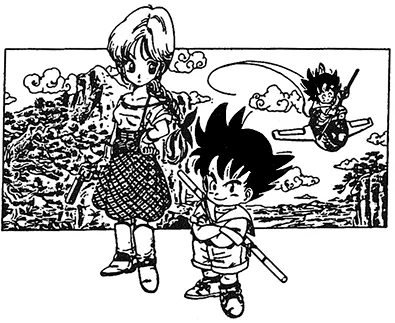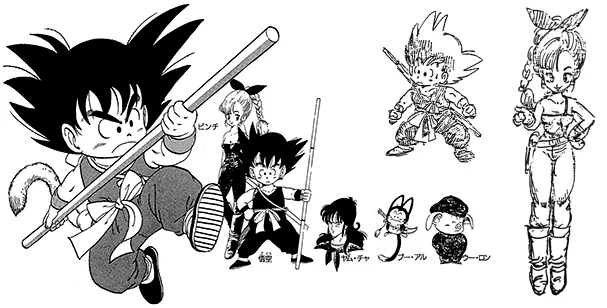The development process of Dragon Ball by Akira Toriyama has undergone significant evolution, having been revised multiple times before reaching its iconic form.
The Initial Inspiration for Goku and the Reason Behind His Transformation

Initially, Toriyama drew inspiration from “Journey to the West,” aiming for a more grounded approach. In this early stage, the character Son Goku was depicted in a manner that accurately reflected the term “Monkey King.” Other characters were similarly inspired, with the initial version of Pigsy resembling Zhu Bajie.
However, this initial approach was soon rejected for being too similar to the original “Journey to the West.” Toriyama and other publishers found this version too derivative, leading to significant changes. Kazuhiko Torishima, the original editor for Toriyama, strongly emphasized the importance of emotional connections between the protagonist and supporting characters, which is vital for a character to face challenges.
The Second Phase of Goku’s Character Development

As Toriyama revised his work, the main character evolved into a more human-like form, while female characters began to resemble Bulma. This stage marked the introduction of scientific elements into the narrative. Despite these changes, the energy and distinct personality traits of the main character have not been fully developed, leading to deeper adjustments in later stages.
The name “Son Goku” was retained, and the female character was initially called “Pinchi,” beginning to take shape in a coherent narrative. During this phase, Toriyama had not yet finalized the names of other characters such as Yamcha, Pu’er, and Oolong.
The Third Revision of Goku by Akira Toriyama

In the third iteration, the character we know today began to take form. Goku’s final design retained the iconic spiky hair, which became a defining trait for the character. The female character was ultimately named “Bulma,” undergoing several transformations. She was depicted as a stronger and more appealing character, influenced by the editor’s vision.
The concept of the Dragon Ball itself also developed during this phase. Toriyama decided to eliminate certain elements to avoid parallels with other works, making the narrative more unique. This focus became central to the storyline, establishing a dynamic quest for discovery and continuity.
Ultimately, despite the backdrop of a Chinese-inspired setting, Toriyama clarified that the narrative is entirely fictional, allowing him creative freedom to explore diverse themes and styles, from adventure and humor to expansive elements of science fiction and fantasy. The result is a distinctive and engaging storyline that highlights Toriyama’s creativity and adaptability.





















